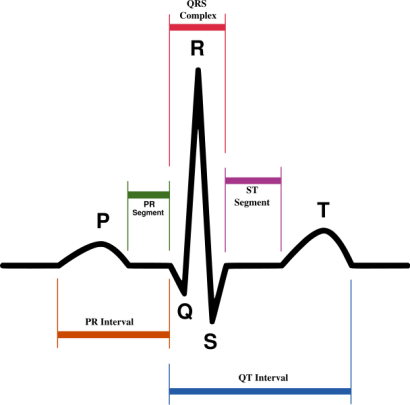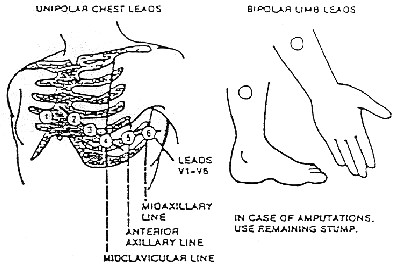Thalassemia
From Wikipedia, the free encyclopedia
| Thalassemia | |
|---|---|
| Classification and external resources | |
| ICD-10 | D56. |
| ICD-9 | 282.4 |
| MedlinePlus | 000587 |
| eMedicine | ped/2229 radio/686 |
| MeSH | D013789 |
Thalassemia is a quantitative problem of too few globins synthesized, whereas sickle-cell anemia (a hemoglobinopathy) is a qualitative problem of synthesis of an incorrectly functioning globin. Thalassemias usually result in underproduction of normal globin proteins, often through mutations in regulatory genes. Hemoglobinopathies imply structural abnormalities in the globin proteins themselves.[1] The two conditions may overlap, however, since some conditions which cause abnormalities in globin proteins (hemoglobinopathy) also affect their production (thalassemia). Thus, some thalassemias are hemoglobinopathies, but most are not. Either or both of these conditions may cause anemia.
The two major forms of the disease, alpha- and beta- (see below), are prevalent in discrete geographical clusters around the world - probably associated with malarial endemicity in ancient times. Alpha is prevalent in peoples of Western African descent, and is nowadays found in populations living in Africa and in the Americas. Beta is particularly prevalent among Mediterranean peoples, and this geographical association was responsible for its naming: Thalassa (θάλασσα) is Greek for the sea, Haema (αἷμα) is Greek for blood. In Europe, the highest concentrations of the disease are found in Greece, coastal regions in Turkey, in particular, Aegean Region such as Izmir, Balikesir, Aydin, Mugla and Mediterranean Region such as Antalya, Adana, Mersin, in parts of Italy, in particular, Southern Italy and the lower Po valley. The major Mediterranean islands (except the Balearics) such as Sicily, Sardinia, Malta, Corsica, Cyprus and Crete are heavily affected in particular. Other Mediterranean people, as well as those in the vicinity of the Mediterranean, also have high rates of thalassemia, including people from the West Asia and North Africa. Far from the Mediterranean, South Asians are also affected, with the world's highest concentration of carriers (16% of the population) being in the Maldives.
The thalassemia trait may confer a degree of protection against malaria, which is or was prevalent in the regions where the trait is common, thus conferring a selective survival advantage on carriers, and perpetuating the mutation. In that respect the various thalassemias resemble another genetic disorder affecting hemoglobin, sickle-cell disease.[2]
Contents[hide] |
[edit] Pathophysiology
Normal hemoglobin is composed of two chains each of α and β globin. Thalassemia patients produce a deficiency of either α or β globin, unlike sickle-cell disease which produces a specific mutant form of β globin.The thalassemias are classified according to which chain of the hemoglobin molecule is affected. In α thalassemias, production of the α globin chain is affected, while in β thalassemia production of the β globin chain is affected.
β globin chains are encoded by a single gene on chromosome 11; α globin chains are encoded by two closely linked genes on chromosome 16. Thus in a normal person with two copies of each chromosome, there are two loci encoding the β chain, and four loci encoding the α chain. Deletion of one of the α loci has a high prevalence in people of African or Asian descent, making them more likely to develop α thalassemias. β thalassemias are common in Africans, but also in Greeks and Italians.
[edit] Alpha (α) thalassemias
Main article: Alpha-thalassemia
The α thalassemias involve the genes HBA1[3] and HBA2,[4] inherited in a Mendelian recessive fashion. There are two gene loci and so four alleles. It is also connected to the deletion of the 16p chromosome. α thalassemias result in decreased alpha-globin production, therefore fewer alpha-globin chains are produced, resulting in an excess of β chains in adults and excess γ chains in newborns. The excess β chains form unstable tetramers (called Hemoglobin H or HbH of 4 beta chains) which have abnormal oxygen dissociation curves.[edit] Beta (β) thalassemias
Main article: Beta-thalassemia
Beta thalassemias are due to mutations in the HBB gene on chromosome 11 ,[5] also inherited in an autosomal-recessive fashion. The severity of the disease depends on the nature of the mutation. Mutations are characterized as (βo or β thalassemia major) if they prevent any formation of β chains (which is the most severe form of β thalassemia); they are characterized as (β+ or β thalassemia intermedia) if they allow some β chain formation to occur. In either case there is a relative excess of α chains, but these do not form tetramers: rather, they bind to the red blood cell membranes, producing membrane damage, and at high concentrations they form toxic aggregates.[edit] Delta (δ) thalassemia
Main article: Delta-thalassemia
As well as alpha and beta chains being present in hemoglobin about 3% of adult hemoglobin is made of alpha and delta chains. Just as with beta thalassemia, mutations can occur which affect the ability of this gene to produce delta chains.[edit] In combination with other hemoglobinopathies
Thalassemia can co-exist with other hemoglobinopathies. The most common of these are:- hemoglobin E/thalassemia: common in Cambodia, Thailand, and parts of India; clinically similar to β thalassemia major or thalassemia intermedia.
- hemoglobin S/thalassemia, common in African and Mediterranean populations; clinically similar to sickle cell anemia, with the additional feature of splenomegaly
- hemoglobin C/thalassemia: common in Mediterranean and African populations, hemoglobin C/βo thalassemia causes a moderately severe hemolytic anemia with splenomegaly; hemoglobin C/β+ thalassemia produces a milder disease.
[edit] Cause

Thalassemia has an autosomal recessive pattern of inheritance
There are an estimated 60-80 million people in the world who carry the beta thalassemia trait alone.[citation needed] This is a very rough estimate and the actual number of thalassemia major patients is unknown due to the prevalence of thalassemia in less developed countries.[citation needed] Countries such as India and Pakistan are seeing a large increase of thalassemia patients due to lack of genetic counseling and screening.[citation needed] There is growing concern that thalassemia may become a very serious problem in the next 50 years, one that will burden the world's blood bank supplies and the health system in general.[citation needed] There are an estimated 1,000 people living with thalassemia major in the United States and an unknown number of carriers.[citation needed] Because of the prevalence of the disease in countries with little knowledge of thalassemia, access to proper treatment and diagnosis can be difficult.[citation needed]
[edit] Treatment
Patients with thalassemia minor usually do not require any specific treatment.[citation needed] Treatment for patients with thalassemia major includes chronic blood transfusion therapy, iron chelation, splenectomy, and allogeneic hematopoietic transplantation.[citation needed][edit] Medication
Medical therapy for beta thalassemia primarily involves iron chelation. Deferoxamine is the intravenously or subcutaneously administered chelation agent currently approved for use in the United States. Deferasirox (Exjade) is an oral iron chelation drug also approved in the US in 2005. Deferoprone is an oral iron chelator that has been approved in Europe since 1999 and many other countries. It is available under compassionate use guidelines in the United States.The antioxidant indicaxanthin, found in beets, in a spectrophotometric study showed that indicaxanthin can reduce perferryl-Hb generated in solution from met-Hb and hydrogen peroxide, more effectively than either Trolox or Vitamin C. Collectively, results demonstrate that indicaxanthin can be incorporated into the redox machinery of β-thalassemic RBC and defend the cell from oxidation, possibly interfering with perferryl-Hb, a reactive intermediate in the hydroperoxide-dependent Hb degradation.[6]
[edit] Carrier detection
- A screening policy exists in Cyprus to reduce the incidence of thalassemia, which since the program's implementation in the 1970s (which also includes pre-natal screening and abortion) has reduced the number of children born with the hereditary blood disease from 1 out of every 158 births to almost zero.[7]
- In Iran as a premarital screening, the man's red cell indices are checked first, if he has microcytosis (mean cell hemoglobin < 27 pg or mean red cell volume < 80 fl), the woman is tested. When both are microcytic their hemoglobin A2 concentrations are measured. If both have a concentration above 3.5% (diagnostic of thalassemia trait) they are referred to the local designated health post for genetic counseling.[8]
[edit] Epidemiology
Generally, thalassemias are prevalent in populations that evolved in humid climates where malaria was endemic. It affects all races, as thalassemias protected these people from malaria due to the blood cells' easy degradation.Thalassemias are particularly associated with people of Mediterranean origin, Arabs, and Asians.[11] The Maldives has the highest incidence of Thalassemia in the world with a carrier rate of 18% of the population. The estimated prevalence is 16% in people from Cyprus, 1%[12] in Thailand, and 3-8% in populations from Bangladesh, China, India, Malaysia and Pakistan. There are also prevalences in descendants of people from Latin America and Mediterranean countries (e.g. Greece, Italy, Portugal, Spain, and others). A very low prevalence has been reported from people in Northern Europe (0.1%) and Africa (0.9%), with those in North Africa having the highest prevalence. It is also particularly common in populations of indigenous ethnic minorities of Upper Egypt such as the Beja, Hadendoa, Sa'idi and also peoples of the Nile Delta, Red Sea Hill Region and especially amongst the Siwans.
[edit] Benefits
Epidemiological evidence from Kenya suggests another reason: protection against severe anemia may be the advantage.[13]People diagnosed with heterozygous (carrier) β thalassemia have some protection against coronary heart disease.[14]
[edit] References
- ^ Hemoglobinopathies and Thalassemias
- ^ Weatherall David J, "Chapter 47. The Thalassemias: Disorders of Globin Synthesis" (Chapter). Lichtman MA, Kipps TJ, Seligsohn U, Kaushansky K, Prchal, JT: Williams Hematology, 8e: http://www.accessmedicine.com/content.aspx?aID=6123722.
- ^ Online 'Mendelian Inheritance in Man' (OMIM) 141800
- ^ Online 'Mendelian Inheritance in Man' (OMIM) 141850
- ^ Online 'Mendelian Inheritance in Man' (OMIM) 141900
- ^ Tesoriere L, Allegra M, Butera D, Gentile C, Livrea MA (July 2006). "Cytoprotective effects of the antioxidant phytochemical indicaxanthin in beta-thalassemia red blood cells". Free Radical Research 40 (7): 753–61. doi:10.1080/10715760600554228. PMID 16984002.
- ^ Leung TN, Lau TK, Chung TKh (April 2005). "Thalassaemia screening in pregnancy". Current Opinion in Obstetrics & Gynecology 17 (2): 129–34. doi:10.1097/01.gco.0000162180.22984.a3. PMID 15758603.
- ^ Samavat A, Modell B (November 2004). "Iranian national thalassaemia screening programme". BMJ (Clinical Research Ed.) 329 (7475): 1134–7. doi:10.1136/bmj.329.7475.1134. PMID 15539666.
- ^ Spanish Baby Engineered To Cure Brother
- ^ His sister's keeper: Brother's blood is boon of life, Times of India, 17 September 2009
- ^ E. Goljan, Pathology, 2nd ed. Mosby Elsevier, Rapid Review Series.
- ^ http://www.dmsc.moph.go.th/webrOOt/ri/Npublic/p04.htm
- ^ Wambua S, Mwangi TW, Kortok M, et al. (May 2006). "The effect of alpha+-thalassaemia on the incidence of malaria and other diseases in children living on the coast of Kenya". PLoS Medicine 3 (5): e158. doi:10.1371/journal.pmed.0030158. PMID 16605300.
- ^ Tassiopoulos S, Deftereos S, Konstantopoulos K, et al. (2005). "Does heterozygous beta-thalassemia confer a protection against coronary artery disease?". Annals of the New York Academy of Sciences 1054: 467–70. doi:10.1196/annals.1345.068. PMID 16339699.












